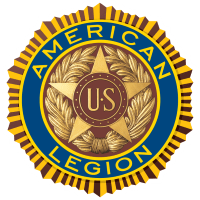
Here are answers to 11 key questions about the new law and what it means for The American Legion.
Question: How does this change the eligibility requirements for The American Legion?
Answer: The only change is that Congress has reduced the number of eligibility periods from seven to two. They are April 6, 1917, to Nov. 11, 1918, and Dec. 7, 1941, and continuing. No other restrictions are changed.
Question: What’s the impact on veterans who previously were not eligible for American Legion membership?
Answer: Veterans who were honorably discharged but whose service did not fall into the previous defined war eras may now join The American Legion immediately. To do so, eligible members may sign up at www.legion.org/join.
Question: I am among the veterans who were not allowed to join previously, so why do you want me now?
Answer: The American Legion’s founding fathers believed, “a veteran is a veteran,” an axiom that has held true throughout the organization’s more than century of service. Some veterans were ineligible to join because of the war eras that were defined by Congress. The recent bill passage and president’s signature changed that.
Question: So how does this differentiate The American Legion from AMVETS?
Answer: The American Legion’s eligibility criteria states that veterans must have served during “wartime.” When Congress decides the U.S. is no longer in a state of war, the Legion’s membership eligibility period will close, while AMVETS will still be open to those who served.
Question: How does this affect the Sons of The American Legion (SAL)?
Answer: The Sons’ eligibility criteria will change along with that of The American Legion. Any son or grandson of a living American Legion member will be able to join the SAL program. (Sons and grandsons of deceased veterans are also eligible.) For example, a son of a veteran who served between 1985 and 1988 previously would not have been eligible. With the extension of the war period, that veteran would immediately be eligible for The American Legion and the son would be able to join the SAL.
Question: How does this affect membership for departments, districts and posts?
Answer: This change opens up American Legion membership to thousands more veterans who likely live in your communities. They may become members immediately.
Question: The current membership applications don’t address the eligibility change. How do we process those members? Answer: New membership materials will be developed and provided as quickly as possible. Until then, it is recommended that prospective members from a previously undocumented war era write “Other Conflicts” in the eligibility date section and send it in to their department with the appropriate dues. https://www.legion.org/membership/246573/materials-reflect-legion-act-membership-eligibility
Question: What steps should departments, districts and posts focus on?
Answer: A good first step would be to review all recruiting materials to look for eligibility dates. Information on electronic media (websites, social media channels, etc.) should be changed immediately. It is up to departments to decide on the best way to handle printed materials, while updated ones are being produced.
Question: How does this change the Paid Up For Life program?
Answer: There are no changes to the PUFL program, though the newly eligible members would be able to become PUFLs. To learn more about the program, visit https://www.legion.org/PUFL
Question: Who can I contact for more information about this change as it applies to membership and recruiting?Answer: Contact the national Membership Division. Visit this web page to find the representative in your state. https://www.legion.org/membership/contactus

